CCB completes successful season of Red Knot resighting in Georgia
Grace Finds Another Catfish Farm June 27, 2015
June 29, 2015Red Skies at Morning, Black Rail Warning
July 2, 2015
Conditions within spring staging sites along the western Atlantic Coast are critical to the future of the rufa population of red knots, which was recently listed as “threatened” under the U.S. Endangered Species Act. While staging within these sites, birds must build a large enough energy reserve to complete their flight to the Arctic and arrive with enough of a surplus to initiate reproduction and take advantage of the short breeding season. Although considerable work has been conducted to identify and study staging sites within the mid-Atlantic region, much less is known about the distribution and status of sites along the south Atlantic Coast. Filling information gaps about the importance of this region in the life cycle of this imperiled population has become a conservation priority.
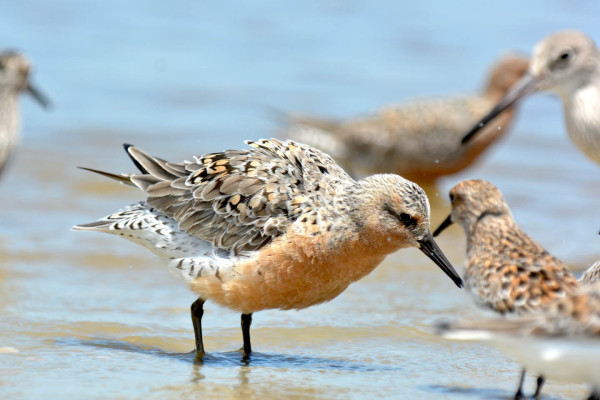
Red knot in breeding plumage stages along the Georgia Coast in May. Photo by Perri Rothemich.
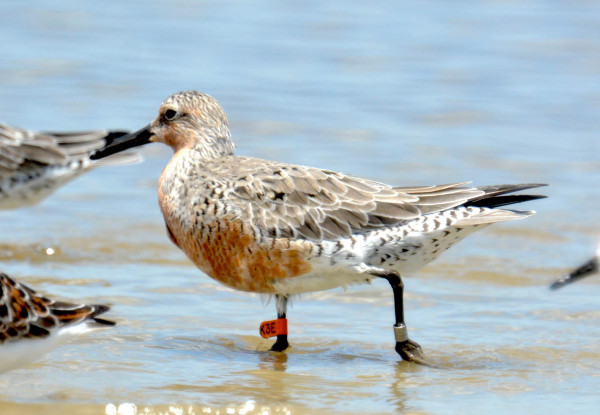
A flagged red knot forages along the Georgia Coast. This knot was seen by researchers in San Antonio Oeste, Argentina, until the large migratory flocks departed there on April 26th and 27th. The bird was first seen in Georgia on May 7th at Pelican Spit, completing the 6,000-mile journey in at most 10 days. Photo by Perri Rothemich.
The Center for Conservation Biology recently completed the 2nd year of a 3-year study of red knot distribution and population size in coastal Georgia during spring migration. The focus of fieldwork was to use previously flagged birds to examine duration of residency, local movements, connectivity with other staging areas and the number of birds using the coast of Georgia. The project focused on several locations and involved repeated visits to these sites to read leg flags. Information will be used to better understand the importance of the south Atlantic Coast and to designate critical habitat for this population.
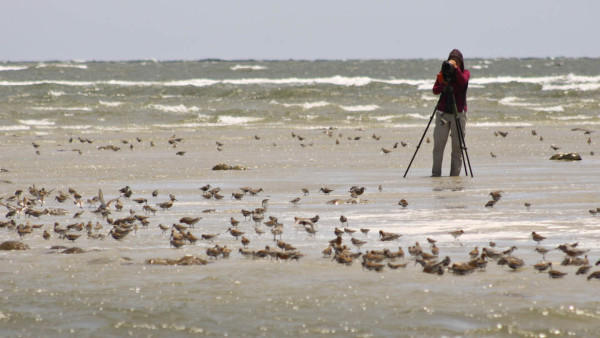
CCB technician Amy Whitear uses a spotting scope to resight red knots foraging among spawning Horseshoe Crabs along the Georgia coast. Photo by Fletcher Smith.
One of the interesting observations during the 2015 season was the foraging flexibility demonstrated by the knots staging in Georgia. Throughout April, knots fed on small clams. As horseshoe crab spawning events were initiated in late April and early May, knots fed on concentrations of crab eggs during high tide and would then switch to feeding on clams when the outgoing tide exposed them to the birds. This two-fisted strategy is highly efficient and different than those of knots in Delaware Bay that feed mostly on horseshoe crabs and knots in Virginia that feed mostly on clams and mussels. In Georgia, the knots fed exclusively on clams in April, fed on clams and crab eggs in late April through mid-May and then fed exclusively on crab eggs in late May. Large concentrations of other shorebirds (including semi-palmated sandpipers, short-billed dowitchers, sanderlings, and ruddy turnstones) were observed feeding on horseshoe crab eggs as well.
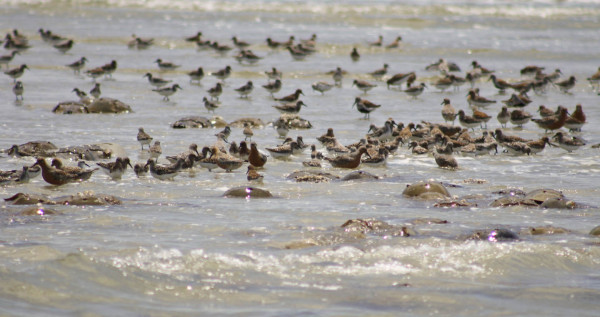
Horseshoe crabs spawn on a sand bar along the Georgia coast. Similar spawning events took place in several locations daily between late April and the 3rd week of May. Photo by Fletcher Smith.
Several large flocks of red knots were monitored along the coast between Tybee Island and Brunswick. The peak count was on the 23rd of May, when approximately 6,000 knots were seen at the primary roosting and foraging sites. Over 5,000 knots departed Georgia between 24 and 26 May. This late departure suggests that the birds are flying directly from the Georgia Coast to arctic breeding grounds.
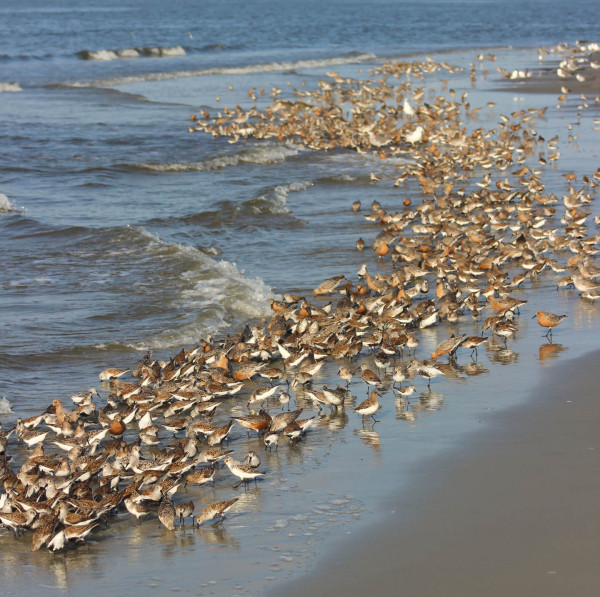
A mixed flock of shorebirds forage on horseshoe crab eggs on a rising tide in coastal Georgia. Photo by Hillary Thompson.
This project is a collaborative effort by US Fish and Wildlife Service, Georgia Department of Natural Resources, Manomet Center for Conservation Sciences, The Nature Conservancy, and The Center for Conservation Biology. Significant assistance was provided by the staff of Little St. Simons Island and by Pat and Doris Leary and Perri Rothemich. Funding for the three-year project is provided by US Fish and Wildlife Service, National Fish and Wildlife Foundation, Georgia Power, and The Center for Conservation Biology.
Written by Fletcher Smith | fmsmit@wm.edu | (757) 221-1617 &
Bryan Watts | bdwatt@wm.edu | (757) 221-2247
July 1, 2015



